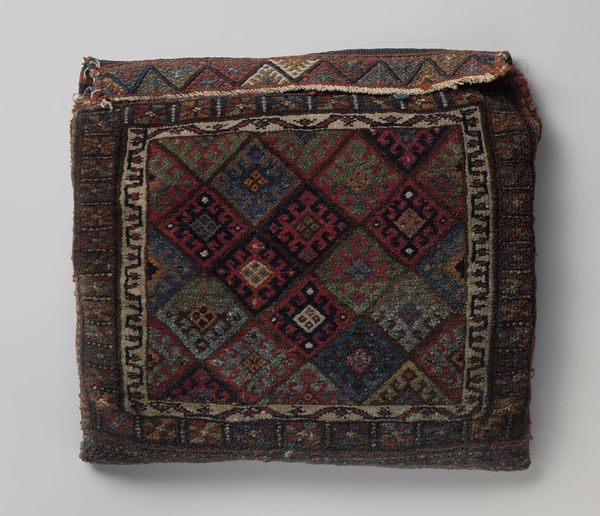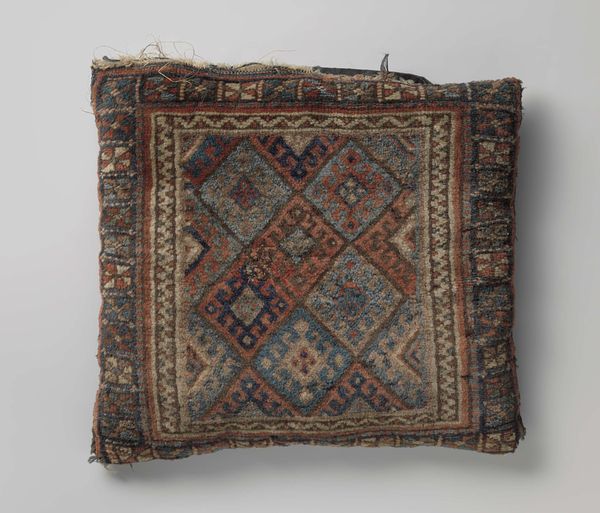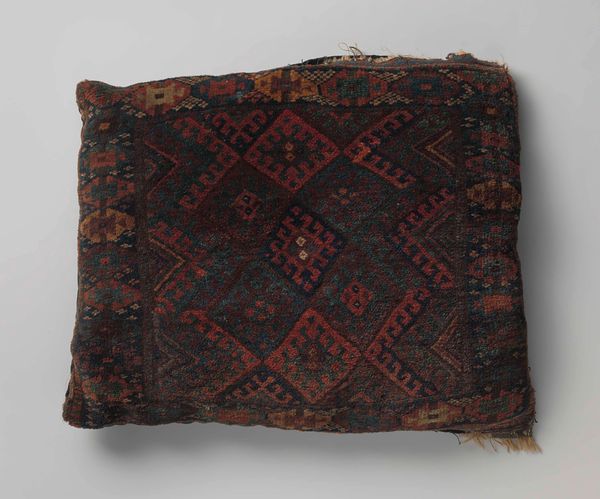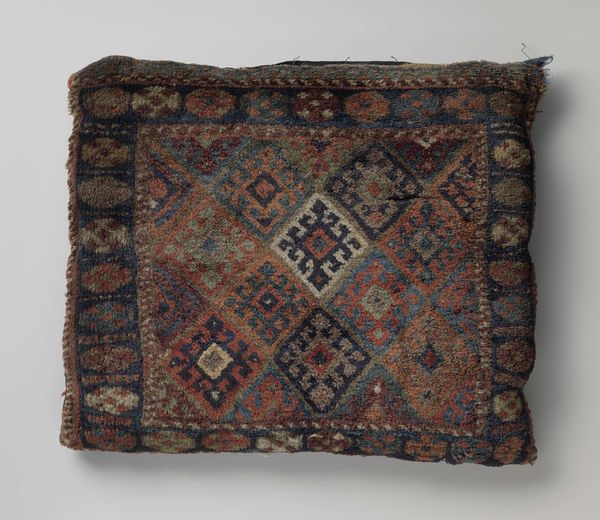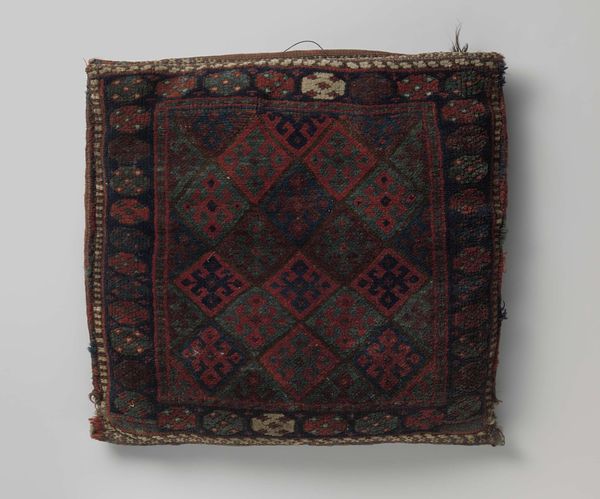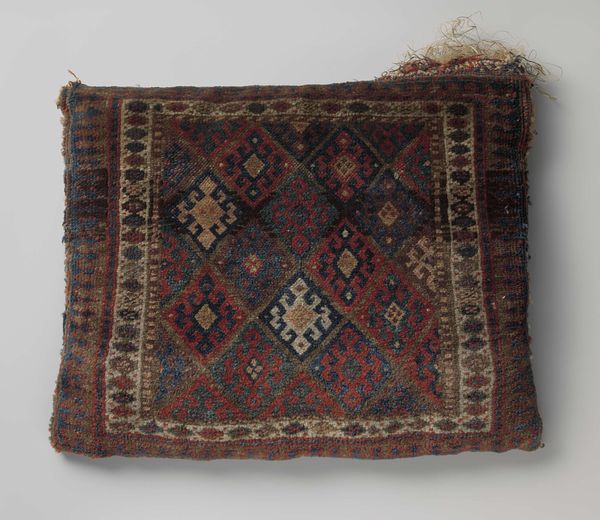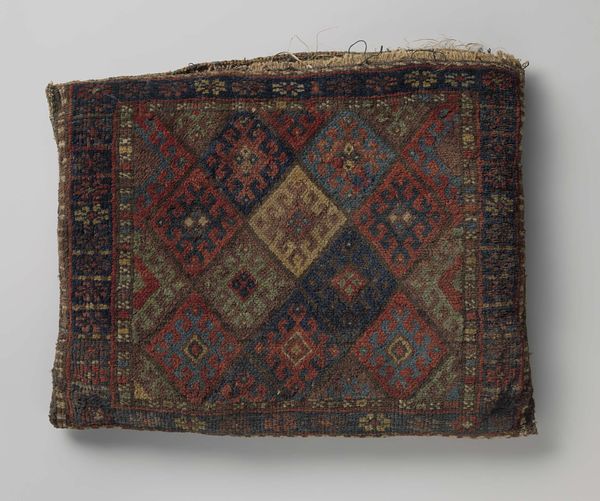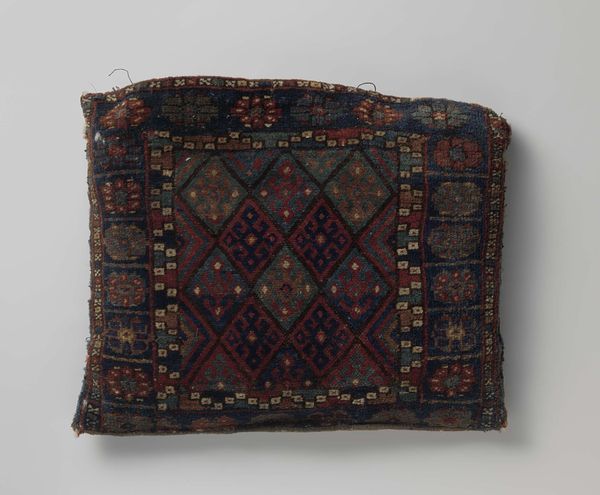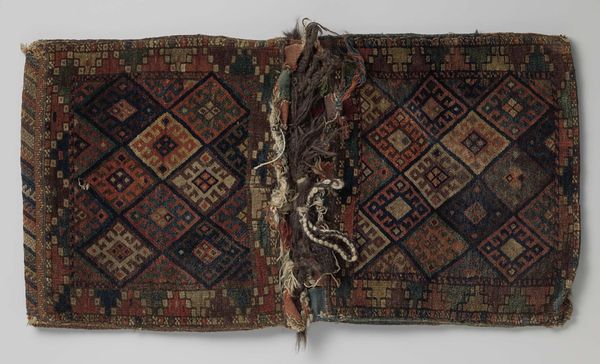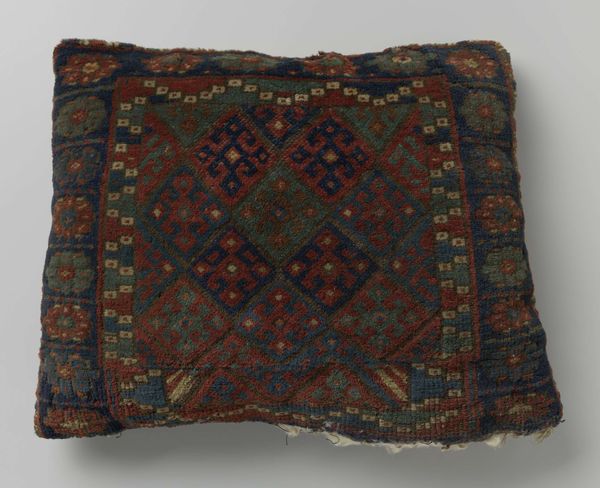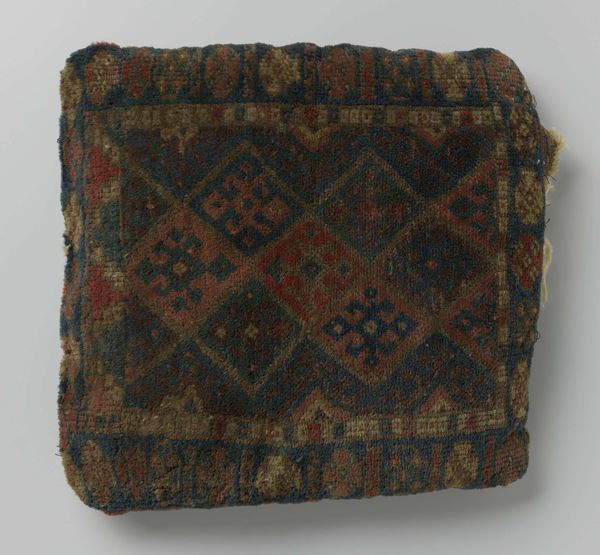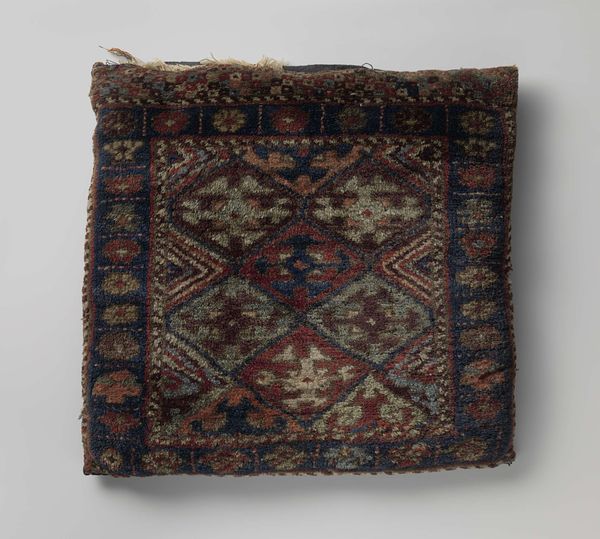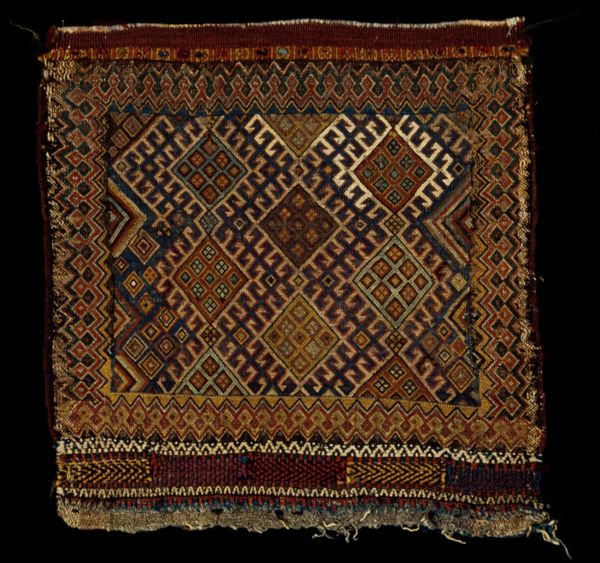
weaving, textile
#
weaving
#
textile
#
geometric
Dimensions: height 100 cm, width 55 cm, depth 10 cm
Copyright: Rijks Museum: Open Domain
Editor: This is a saddlebag, made by the Jaffi people sometime between 1800 and 1900. It's a textile weaving with geometric and floral elements. The wear and tear give it an aged, almost archaeological feel. What stands out to you when you look at it? Curator: Primarily, the dialectic interplay of color and form captivates. The composition is structured around a central square containing diamond grid patterns with interspersed floral motifs, isn’t it? Notice how the weaver organized different areas of geometric and organic, each carefully defined by changes in the structural weave of the fabric? What compositional elements draw your eye the most? Editor: Definitely the contrast between the central grid and the border with the fragmented flowers and blocks! They draw you in, while also feeling separate somehow. Curator: Precisely. Consider the formal relationships established through the geometric configurations; a structuralist approach might decode them as visual signifiers, representing the social or belief systems. How do you perceive the formal tension between its intended function and aesthetic form? Editor: I hadn't thought of it like that! So the artist uses geometric signs to depict their culture? It makes me look at it differently – like a language woven into the bag itself. Curator: Indeed, the deliberate execution of forms, their relation, is charged. Its formal elegance isn't accidental, but symbolic communication realized via deliberate craft. Editor: I now see how a structuralist perspective brings so much meaning to the weaving itself! Thanks! Curator: A pleasure. Thinking through a formalist approach opens a piece like this, transforming an old artifact to complex visual narrative.
Comments
No comments
Be the first to comment and join the conversation on the ultimate creative platform.
